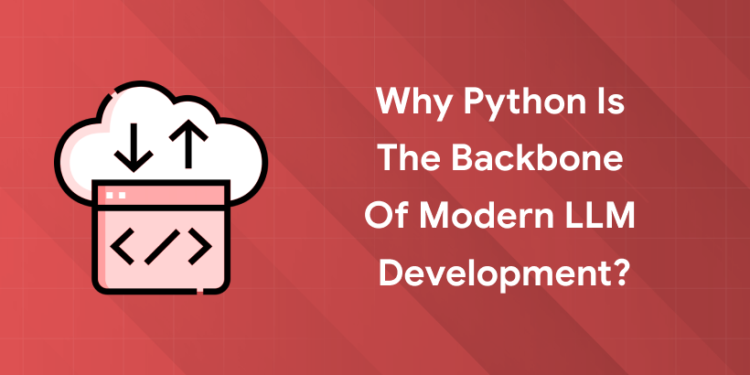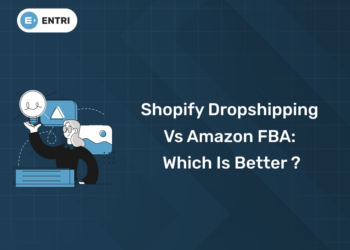Table of Contents
Key Takeaways:
- Python’s resurgence is driven by the rise of LLMs and generative AI.
- Python’s ecosystem and ease of use make it the top choice for AI and LLM development.
- Leading libraries like Transformers, LangChain, and PyTorch empower developers to build advanced AI applications.
- Python is preferred for prototyping and research, but is also widely used in production.
- Staying updated with Python and LLM trends is crucial for career growth in AI.
Introduction
Remember when Python seemed to fade into the background, overshadowed by the rise of newer, faster languages? For years, developers debated whether Python’s simplicity and flexibility could keep up with the demands of modern AI and high-performance computing. But then came the explosion of Large Language Models (LLMs)—and suddenly, Python was everywhere again. Today, it’s not just surviving; it’s thriving, powering the most advanced AI tools and research. Whether you’re a student, a developer, or just curious about tech trends, Python’s comeback story is a testament to how adaptability can redefine a language’s legacy.
In this blog, we’ll explore how the rise of LLMs fueled Python’s journey from stagnation to resurgence. We’ll look at the key reasons behind Python’s relevance, the libraries driving innovation, and the data that shows why Python is once again the go-to language for AI and LLM development in 2026.
Also read: What is Python? The Most Versatile Programming Language
Python’s Journey: From Stagnation to Resurgence
1: Which of the following data types is immutable in Python?
For several years, Python faced a period of stagnation. As newer, faster languages like Rust and Go gained traction, many developers questioned Python’s relevance in performance-critical environments. Python’s dynamic typing, slower execution speed, and memory overhead made it less appealing for large-scale, high-throughput systems. Developers often turned to compiled languages for tasks requiring speed, efficiency, and strict type safety.
However, the landscape changed dramatically with the rise of Large Language Models (LLMs) and generative AI. These new applications prioritized rapid prototyping, flexibility, and access to a rich ecosystem over raw performance. Python’s strengths—easy syntax, a massive collection of libraries, and strong community support—became more valuable than ever. The AI boom led to a surge in demand for Python skills, with Python now leading in AI job postings and GitHub activity. According to the 2025 Stack Overflow Developer Survey, Python is the most sought-after programming language for AI jobs, with a7% increase in adoption from 2024 to 2025. [1]
- Python’s intuitive syntax made it accessible to beginners and experts alike.
- Its ecosystem of AI and machine learning libraries provided everything needed for rapid development.
- The language’s flexibility allowed seamless integration with high-performance C/C++ code for heavy computation.
- Python became the glue language for orchestrating complex AI workflows, making it indispensable for research and production.
🚀 Start Coding Today! Enroll Now with Easy EMI Options. 💳✨
Gain expertise in Django and open doors to lucrative opportunities in web development.
Start Learning With EMI Payment OptionsWhy Python Dominates LLM Development
Python’s dominance in LLM development stems from its ecosystem, ease of use, and adaptability. Here’s why Python is the go-to language for building and deploying LLMs:
- Massive Ecosystem: Python offers a wide range of libraries specifically designed for AI and machine learning, such as Transformers, LangChain, PyTorch, and TensorFlow. These libraries make it easy to access state-of-the-art models, build custom pipelines, and deploy applications quickly.
- Ease of Use: Python’s simple syntax and readability allow developers to focus on solving problems rather than wrestling with language intricacies. This makes it ideal for rapid prototyping and experimentation, which are crucial in the fast-evolving field of LLMs.
- Community Support: Python has a vibrant community that continuously contributes to its ecosystem. This means regular updates, new libraries, and extensive documentation, all of which lower the barrier to entry for new developers.
- Integration Capabilities: Python acts as a “glue” language, seamlessly integrating with high-performance C/C++ code for heavy computation while offering rapid prototyping and workflow orchestration. This flexibility allows developers to build, train, and deploy LLMs efficiently, without getting bogged down in low-level details.
- Academic Adoption: Python is widely used in academia for research and teaching, making it the preferred language for publishing and sharing new LLM models and techniques.
Python’s strengths in these areas have made it the language of choice for LLM development, empowering developers to build advanced AI applications with ease and efficiency.
Key Python Libraries Powering LLMs in 2026
Python’s ecosystem is packed with libraries that make LLM development faster and more accessible. These libraries provide everything from pre-trained models to workflow orchestration and advanced NLP tools. Here’s a look at some of the most important libraries in 2026:
| Library | Best For | Key Features |
|---|---|---|
| Transformers | Pre-trained LLMs, fine-tuning | Thousands of models, easy deployment, supports BERT, T5, LLaMA, and more |
| LangChain | LLM-powered apps, chatbots | Prompt chaining, memory, external data integration, API orchestration |
| SpaCy | NLP, tokenization, NER | Fast, industrial-grade NLP,75+ languages, transformer-based pipelines |
| PyTorch | Deep learning, model training | Flexible, dynamic computational graph, research, and production-ready |
| TensorFlow | Large-scale AI applications | Production-ready, scalable, strong community support |
| SentenceTransformers | Semantic search, similarity | Over 5,000 pre-trained models, seamless Hugging Face integration |
| FastText | Word embeddings, text classification | Fast, scalable,157 languages, lightweight |
| Gensim | Topic modeling, document embeddings | Word2Vec, LDA, optimized for large datasets |
| Stanza | NER, POS tagging | Deep learning-based,70+ languages, integrates with SpaCy and Hugging Face |
| TextBlob | Sentiment analysis, text processing | Simple API, great for beginners and prototyping |
These libraries make it easy to access state-of-the-art models, build custom pipelines, and deploy applications quickly. They also support everything from text generation and data processing to complex workflow orchestration.
Read in detail: Best Python Libraries for Machine Learning
Python vs. Other Languages for AI and LLMs
While C++ and Rust excel in performance and type safety, Python’s ecosystem and ease of use make it the preferred choice for prototyping, research, and most AI workflows. Julia is gaining ground for performance-driven projects, but Python remains the most versatile and widely adopted language for AI. According to a 2025 survey by iTransition, Python is the most sought-after language for AI jobs, with a 7% increase in adoption from 2024 to 2025. For most AI and LLM tasks, Python’s speed of development and ecosystem outweigh its limitations in performance and memory usage.
🚀 Start Coding Today! Enroll Now with Easy EMI Options. 💳✨
Gain expertise in Django and open doors to lucrative opportunities in web development.
Start Learning With EMI Payment OptionsEntri’s Python Programming Course: Master Python for AI and LLMs
Ready to dive into Python and unlock your potential in AI and LLMs? Entri’s AI-Driven Python Programming Course is designed for aspiring developers and professionals looking to build in-demand skills. The course covers everything from Python basics to advanced AI integration, with hands-on projects and real-world applications. You’ll learn to work with leading libraries, build LLM-powered apps, and gain placement assistance to help you land your dream job in tech.
Conclusion
Python’s journey from stagnation to resurgence is a story of adaptability and innovation. As LLMs continue to shape the future of technology, Python stands at the forefront, empowering developers to build the next generation of AI-powered solutions. Whether you’re just starting or looking to upskill, Python is your gateway to the world of LLMs and AI.
🚀 Start Coding Today! Enroll Now with Easy EMI Options. 💳✨
Gain expertise in Django and open doors to lucrative opportunities in web development.
Start Learning With EMI Payment OptionsFrequently Asked Questions
Can I build an LLM from scratch using Python?
Yes, Python provides all the tools needed to build, train, and deploy LLMs, including frameworks like PyTorch and libraries like Transformers.
Is Python only good for prototyping, or can it be used in production?
Python is widely used in production for AI and LLM applications, especially when combined with performance-optimized libraries and cloud infrastructure.
What skills do I need to work with Python and LLMs?
A strong grasp of Python, familiarity with libraries like Transformers and LangChain, and knowledge of machine learning concepts are essential.
Are there any alternatives to Python for LLMs?
While other languages like Rust and Julia are gaining traction, Python remains the most popular and practical choice for LLM development.
How can I stay updated on Python and LLM trends?
Follow leading blogs, join developer communities, and enroll in upskilling courses that focus on Python and AI integration.















